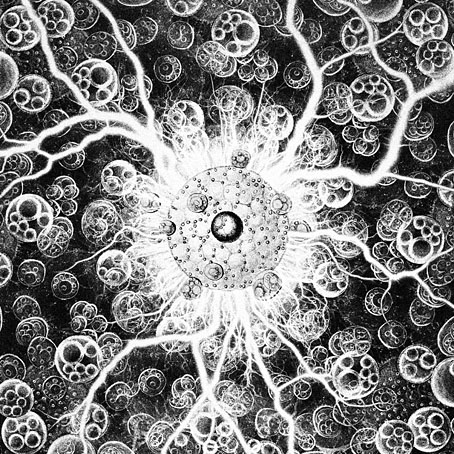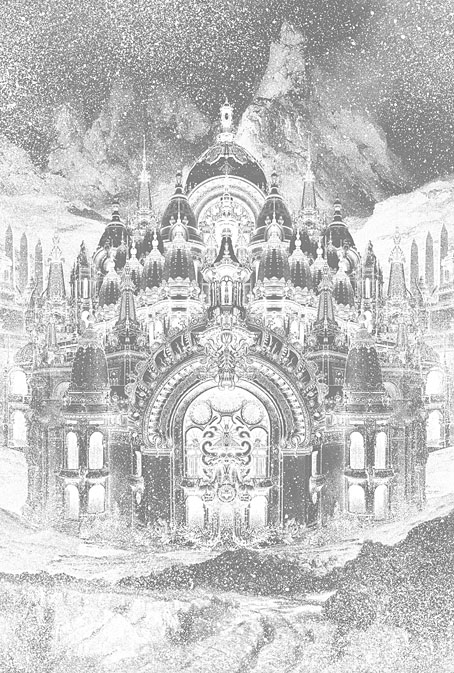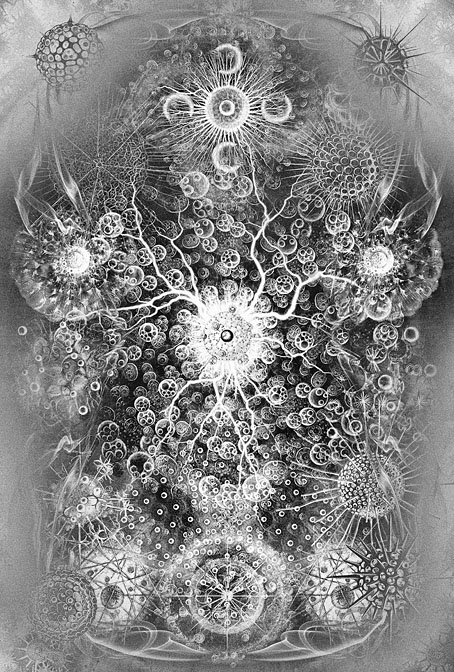
Last month I posted an updated version of the Yuggoth collage I created in 1994 for the Starry Wisdom story collection. I didn’t mention at the time that one purpose of the reworking was to freshen the piece for a more ambitious updating of my own Lovecraft book, The Haunter of the Dark, a volume which has now been through two different editions. I’m generally resistant to the temptation to tamper with old artwork, something which is always present when you’re using digital tools. I’d much rather create something new. In the case of The Haunter of the Dark, however, this has felt necessary when the plan for the new edition requires adding a quantity of my more recent Lovecraft-related pieces to the older art. The section of the book titled The Great Old Ones was a collaboration with Alan Moore in which deities and locations from the Cthulhu Mythos were mapped across the Sephiroth of the Kabbalistic Tree of Life. Most of the art for this section was done in 1999 when I’d only been using Photoshop for a couple of years. I was excited by the possibilities the software presented but some of the results look very typical of the period: lots of obvious filtering, and transparent layering of a kind I seldom do today. Since I finished reworking the Yuggoth collage (which happens to be a part of The Great Old Ones section) I’ve also reworked three more pieces: Nyarlathotep, Kadath and Yog-Sothoth. The latter two you see here, Nyarlathotep isn’t quite finished yet. My intention with the new versions has been to retain the idea, and in some cases the composition, of the original, while creating a new piece which avoids the shortcomings of the 1999 versions.

Kadath, 2025.
Of the two, the original Kadath was a piece I was never happy with. I hadn’t thought very much about how to represent Kadath beyond having a cluster of buildings in a snowy setting. Lovecraft is evasive about the details but the place is essentially a fantastic palace (or maybe a city) in an icy wasteland. My original version collaged together bits of Indian, Thai and Cambodian architecture which created a definite “exotic” appearance but I was never happy about using identifiable temples in this way. The composition was also rather messy. The new piece also takes the collage route, only this time I’ve used architectural details from some of the pavilions built for the Paris Exposition Universelle of 1900. Several of the themed pavilions built for the exposition were fanciful and fantastic extrapolations of the Beaux-Arts style that don’t resemble anything built before or after. The buildings were also temporary constructions so they’re a lot less identifiable than buildings with a longer history.

Yog-Sothoth, 2025.
As for Yog-Sothoth, this one follows the idea of the original but with better choice of elements and presentation. Once again, details are vague as to Yog-Sothoth’s appearance but I always come back to the description of an inter-dimensional mass of spheres or globes. The original illustration manifested these globes by swiping a variety of globular creatures from Ernst Haeckel’s Kunstformen der Natur, something that worked quite well but the composition could have been better. The new picture follows suit, only this time I’ve borrowed details from another Haeckel book, Die Radiolarien (Rhizopoda radiaria): Eine Monographie (1862), which is less well-known and with illustrations of many more globular or radial organisms than in the other volume.
For the remaining pieces I’m going to be drawing rather than collaging. The results will be posted here in due course.
Elsewhere on { feuilleton }
• The Lovecraft archive







